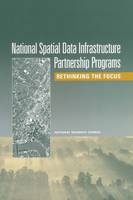


|
|
|
books
| book details |
National Spatial Data Infrastructure Partnership Programs: Rethinking the Focus
By (author) Mapping Science Committee, By (author) Commission on Life Sciences, By (author) Board on Earth Sciences & Resources, By (author) Division on Earth and Life Studies, By (author) National Research Council

|
This book is currently unavailable. Enquire to check if we can source a used copy
|
| book description |
The National Spatial Data Infrastructure (NSDI) was envisioned as a way of enhancing the accessibility, communication, and use of geospatial data to support a wide variety of decisions at all levels of society. The goals of the NSDI are to reduce redundancy in geospatial data creation and maintenance, reduce the costs of geospatial data creation and maintenance, improve access to geospatial data, and improve the accuracy of geospatial data used by the broader community. At the core of the NSDI is the concept of partnerships, or collaborations, between different agencies, corporations, institutions, and levels of government. In a previous report, the Mapping Science Committee (MSC) defined a partnership as ...a joint activity of federal and state agencies, involving one or more agencies as joint principals focusing on geographic information. The concept of partnerships was built on the foundation of shared responsibilities, shared costs, shared benefits, and shared control. Partnerships are designed to share the costs of creation and maintenance of geospatial data, seeking to avoid unnecessary duplication, and to make it possible for data collected by one agency at a high level of spatial detail to be used by another agency in more generalized form. Over the past seven years, a series of funding programs administered by the Federal Geographic Data Committee (FGDC) has stimulated the creation of such partnerships, and thereby promoted the objectives of the NSDI, by raising awareness of the need for a coordinated national approach to geospatial data creation, maintenance, and use. They include the NSDI Cooperative Agreements Program, the Framework Demonstration Projects Program, the Community Demonstration Projects, and the Community-Federal Information Partnerships proposal. This report assesses the success of the FGDC partnership programs that have been established between the federal government and state and local government, industry, and academic communities in promoting the objectives of the National Spatial Data Infrastructure.
| product details |
Normally shipped |
Publisher | National Academies Press
Published date | 1 Jan 2001
Language |
Format | Paperback
Pages | 94
Dimensions | 229 x 152 x 0mm (L x W x H)
Weight | 0g
ISBN | 978-0-3090-8356-0
Readership Age |
BISAC | science / earth sciences / geography
| other options |
|
|
|
To view the items in your trolley please sign in.
| sign in |
|
|
|
| specials |
|
|

|
Carlo Rovelli
Paperback / softback
208 pages
was: R 295.95
now: R 265.95
|
|

|
Carlo Rovelli
Paperback / softback
224 pages
was: R 295.95
now: R 265.95
|
Originally published in Italian: L'ordine del tempo (Milan: Adelphi Edizioni, 2017).
|
|
|
|